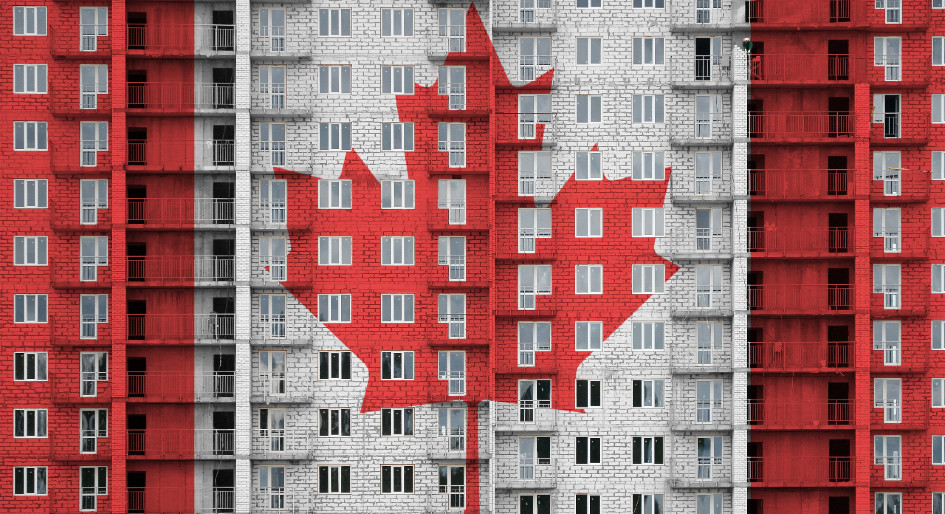Multifamily assets were the second best performers last year for the 44 institutional real estate portfolios represented in the REALPAC/MSCI Canada Property Index. Newly released 2020 investment results find industrial and multifamily on the positive side of the national average total return for 2,356 directly held standing assets, which registered -4.1 per cent.
That further breaks down to a 3.9 per cent income return and a 7.8 per cent decline in capital value. The index value rested at $158.1 billion at year-end 2020, compared to 2,723 directly held standing assets collectively valued at $184 billion 12 months earlier.
“The headline return of 4.1 negative is masking a 28 per cent spread from the best — industrial at 12.7 per cent, which would be a good return in any kind of year — down to negative 15 per cent for retail,” Simon Fairchild, executive director with index producer MSCI, observed during last week’s online results presentation. “That spread between best and worst is twice as big as it was last year, and last year it was the largest that we’d seen.”
With a total return of 5.7 per cent, multifamily performance slipped further behind industrial than in 2019, but also pulled further ahead of office properties, which slipped to a negative 1.5 per cent total return. Multifamily assets delivered average capital growth of 2.2 per cent and an average income return of 3.5 per cent.
Multifamily assets account for 13 per cent of the capital weight of the index — up from 11.4 per cent at year-end 2019. Industrial properties now represent nearly 16 per cent, climbing from 13.2 per cent 12 months earlier.
Investors saw a 2.7 per cent decline in multifamily net operating income for the year — a gentler downward slope than the 30 per cent plunge for retail assets. Meanwhile, sales values dipped from recent years, but stayed above the benchmark analysts typically use as an indicator of a strong market.
Historical data reveals that, on average, assets in the index sell at about a 5 per cent premium over their market-adjusted evaluation — a trend Bryan Reid, MSCI’s executive director, real estate research, attributes to a conservative valuation bias, buyers more actively seeking assets with unrealized potential and vendors more motivated to sell when they can reap a premium.
“There’s a certain amount of sample selection going on there, but you can also see that the premium will increase or decrease over time,” he advised. “In periods of market strength, we tend to see a higher premium than average, and during periods of weakness or uncertainty, that premium tends to decrease or perhaps even becomes negative.”
Real estate continues to draw investment
The latter is the case for retail properties, which recorded average transacted values nearing 10 per cent lower than market valuations in 2020. In contrast, multifamily, industrial and office assets all surpassed the 5 per cent premium. Although the year’s averages are drawn from about half the number of transactions that occurred in 2019, Fairchild reiterated that real estate continues to draw investment.
He pointed to the 7.7 per cent 10-year return on the Canada Property Index versus 5.6 per cent on equities or 4.1 per cent on bonds in the same time period. This year’s return is just the third negative juncture since 1985, with the others occurring in the real estate meltdown of 1990-1997 and the briefer two-year interval of the financial crisis in 2009-2010. The 2020 income return of 4.1 per cent also remains competitive with other investment classes.
“Now, while the asset class may not look terribly favourable right now, it’s that stability that really comes through. With a 4 per cent yield, this is actually not a bad asset to hold whatever is going on, and, clearly, 4 per cent is attractive over the other asset classes,” Fairchild asserted. “The new money going into these portfolios has actually gone up, from about $3.7 billion (in 2019) to $3.9 billion. That’s maybe not what people would have expected.”
Multifamily drew more than $660 million of that net new capital investment. That’s about half of the nearly $1.3 billion directed to industrial development, but well ahead of the $220 million the retail sector captured.
Mobile workforce has repercussions for non-portable assets
While the multifamily sector has shared the same concerns about tenants’ economic stability that office and retail owners/managers have experienced, there is less uncertainty about long-term demand or the rising competition from work-at-home options and e-commerce that the other two sectors now confront. However, in contemplating possible pandemic-fallout, commercial real estate insiders do foresee potential vulnerabilities of non-portable assets in a world where employees are increasingly untethered from their workplaces. Industry executives enlisted to provide on-the-spot insight into the 2020 returns reflected on possible implications for multifamily assets in major and secondary markets.
“The bigger underlying trends are very important,” reiterated Colin Lynch, head of global real estate investments with TD Asset Management. “One: the Millennials are forming families — that’s happening later than before, but it is happening — and people are looking to bigger spaces to form those families; and two, especially in the USA, there is a cost dynamic that’s been going on for more than a decade where people are moving to cities such as Dallas, Houston, Atlanta, Raleigh and Durham. Why? Because those areas of the USA are cheaper.”
“The aggregate demand for real estate or shelter doesn’t really change. As long as we have people working, living and breathing, we need shelter to operate under. It’s just that the location of those functional elements of the economy may disperse to more affordable regions,” concurred Peter Cuthbert, president and head of global real estate with Fiera Real Estate Investments. “Or, if you can telecommute, maybe this a possible solution for mobility issues that we’ve been experiencing in our big cities.”
Barbara Carss is editor-in-chief of Canadian Property Management.






